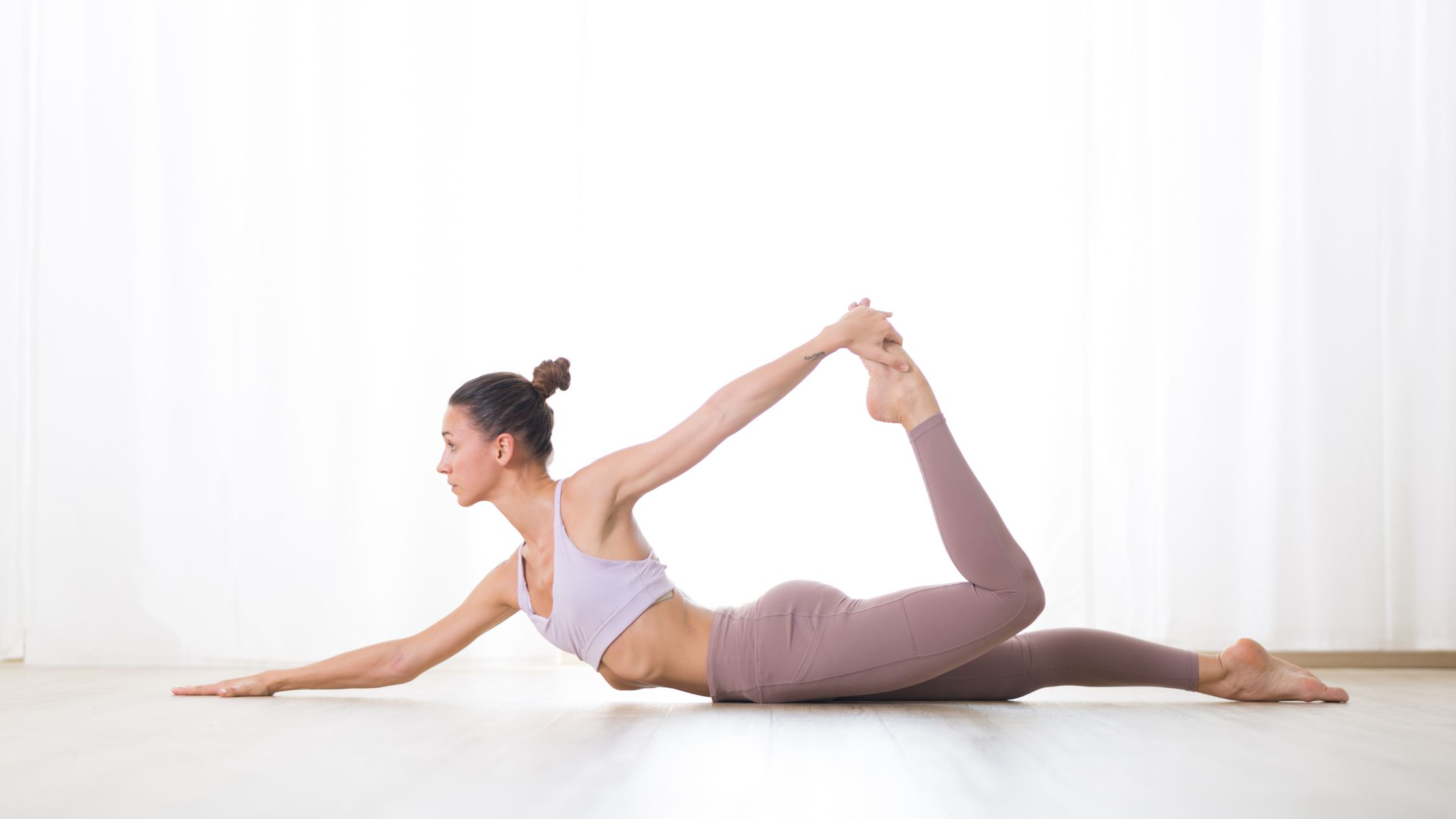PCOD stands for Polycystic Ovary Syndrome. It is a common hormonal disorder that affects women of reproductive age. PCOD is characterized by the presence of multiple small cysts on the ovaries, irregular menstrual cycles, and hormonal imbalances. So here we can discuss about Yoga poses for PCOD, But let’s know about PCOD first.
What is PCOD?
The exact cause of PCOD is not fully understood, but it is believed to be a combination of genetic and environmental factors. Insulin resistance, where the body’s cells become less responsive to insulin, and hormonal imbalances, such as elevated levels of androgens (male hormones), are often observed in individuals with PCOD.
The symptoms of PCOD can vary but commonly include irregular or absent periods, excessive hair growth (hirsutism), acne, weight gain, and difficulty conceiving. PCOD can also increase the risk of developing other health issues like type 2 diabetes, high blood pressure, and cardiovascular disease.
PCOD is diagnosed through a combination of medical history, physical examinations, blood tests to measure hormone levels, and ultrasound imaging of the ovaries. Treatment for PCOD aims to manage symptoms and minimize associated health risks. It may include lifestyle modifications like regular exercise, a balanced diet, weight management, and medications to regulate menstrual cycles and control hormonal imbalances. In some cases, fertility treatments may be necessary for individuals trying to conceive.
Early diagnosis, regular monitoring, and appropriate management of PCOD are important for maintaining hormonal balance, managing symptoms, and reducing the risk of long-term complications. It is essential for individuals experiencing PCOD symptoms to consult with healthcare professionals to receive proper diagnosis and personalized treatment plans.
Yoga Poses for PCOD
While yoga cannot cure PCOD, it can help alleviate symptoms, reduce stress, and improve overall well-being. Here are some yoga poses that may be beneficial for individuals with PCOD:
Supta Baddha Konasana (Reclining Bound Angle Pose):
Supta Baddha Konasana, also known as Reclining Bound Angle Pose or Butterfly Pose, can be a beneficial yoga pose for individuals with PCOD (Polycystic Ovary Syndrome). This pose helps open the hips, stretches the inner thighs, and promotes relaxation, which can be particularly helpful for relieving tension and discomfort associated with PCOD. Here’s how to practice Supta Baddha Konasana:

- Begin by sitting on the floor with your legs extended in front of you.
- Bend your knees and bring the soles of your feet together, allowing your knees to drop out to the sides.
- Gradually recline your upper body backward, supporting yourself on your forearms.
- Continue to recline until you are lying flat on your back, making sure to maintain a comfortable position.
- Allow your arms to relax by your sides with your palms facing up.
- Close your eyes and take slow, deep breaths, focusing on relaxing your body and mind.
- Stay in this pose for 5 to 10 minutes, or as long as it feels comfortable for you.
- To release the pose, slowly bring your knees together and extend your legs out in front of you.
Bhujangasana (Cobra Pose):
The Cobra Pose strengthens the back and abdominal muscles, helping to alleviate lower back pain often associated with PCOD. Lie on your stomach, place your hands under your shoulders, and gently lift your upper body while keeping your pelvis grounded. Hold the pose while breathing deeply.

Dhanurasana (Bow Pose):
This back-bending pose helps stimulate the reproductive organs and improve digestion. Lie on your stomach, bend your knees, and hold your ankles. Inhale and lift your chest while simultaneously raising your thighs off the ground. Feel the stretch across your abdomen.

Nadi Shodhana Pranayama (Alternate Nostril Breathing):
Breathing exercises are crucial for stress reduction and hormonal balance. Sit in a comfortable cross-legged position. Close your right nostril with your right thumb and inhale deeply through your left nostril. Then, close your left nostril with your ring finger and exhale through your right nostril. Continue alternating for a few minutes.
Balasana (Child’s Pose):
Child’s pose is a restorative posture that helps release tension in the lower back and abdomen. It promotes relaxation and can help relieve menstrual pain and discomfort.
Paschimottanasana (Seated Forward Bend):
This pose stretches the hamstrings, lower back, and pelvic region. It can help stimulate the ovaries, regulate menstrual cycles, and improve digestion.
Setu Bandhasana (Bridge Pose)
The Bridge Pose helps strengthen the pelvic area, improve circulation, and reduce stress. Lie on your back, bend your knees, and place your feet flat on the floor. Lift your hips off the ground, interlace your fingers under your back, and press your arms into the floor for support.
Ardha Matsyendrasana (Half Lord of the Fishes Pose):
This seated twist helps stimulate the reproductive organs and improve digestion. Sit with your legs extended, bend your right knee, and place your right foot outside your left knee. Twist to the right while placing your left elbow on the outside of your right knee. Repeat on the other side.
Yoga poses for pcos and pcod
Remember, it’s important to consult with a qualified yoga instructor or healthcare professional before starting any new exercise routine, especially if you have PCOD or any other underlying health conditions. They can guide you on the correct techniques and modifications based on your individual needs and limitations. Regular practice of yoga, along with a balanced diet and medical guidance, can contribute to managing PCOD and promoting overall well-being.
How Yoga for PCOS Weight Loss?
Yoga can be a beneficial component of a holistic approach to weight management for individuals with PCOS (Polycystic Ovary Syndrome). While it’s important to note that PCOS is a complex hormonal disorder that requires comprehensive medical management, regular yoga practice can support weight loss efforts and overall well-being. Here are some yoga poses and practices that can be helpful:
- Surya Namaskar (Sun Salutations): This dynamic sequence of poses combines stretching, strengthening, and cardiovascular elements. It can help increase metabolism, build lean muscle mass, and promote weight loss.
- Ardha Matsyendrasana (Half Spinal Twist): This seated twist stimulates the abdominal organs, improves digestion, and helps regulate hormonal imbalances associated with PCOS.
- Bhujangasana (Cobra Pose): Cobra pose strengthens the back muscles, improves digestion, and helps regulate metabolism. It can contribute to strengthening the core and toning the abdominal area.
- Naukasana (Boat Pose): Boat pose engages the core muscles, strengthens the abdominal area, and stimulates the reproductive organs. It can help tone the abdominal muscles and improve digestion.
- Pranayama (Breathing Exercises): Deep breathing exercises such as Kapalabhati (Skull Shining Breath) and Nadi Shodhana (Alternate Nostril Breathing) can help reduce stress, balance hormones, and support weight management efforts.
- Meditation and Mindfulness: Incorporating mindfulness practices and meditation can help manage stress, which is often associated with PCOS and can impact weight management. By reducing stress, individuals may experience better control over their eating habits and overall well-being.
- Read More:- 1500 Calorie Indian Diet Plan
- Read More:- Vitamin B12-Rich Fruits and Vegetables
- Read More :- Benefits of drinking hot water with lemon
Remember, yoga should be practiced as part of a comprehensive approach that includes a balanced diet, regular physical activity, and medical guidance. It is essential to consult with a qualified yoga instructor and healthcare professional to receive personalized guidance based on your specific needs and limitations. With consistency and patience, yoga can support weight loss efforts, promote overall health, and improve the management of PCOS.
